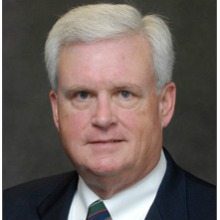
New Series: WashingtonExec 2012 Prediction Issue: Execs Speak Out
2012 is fast approaching, and with it comes big changes in the Federal IT industry. WashingtonExec is giving local executives the opportunity to share their thoughts on where they see the government contracting industry headed. Leaders of the industry were asked a series of predictions questions focused on challenging issues such as cloud computing, healthcare IT, defense and so forth.
Today the series is kicked off with Sterling Phillips, CEO of GTSI.
 “As we view 2012, we anticipate continued challenges in the Federal IT market starting with the likely use of a Continuing Resolution (CR) to fund operations while Congress arrives at a 2012 budget. Given the contentious environment on Capitol Hill, a repeat of the FY2011 six-month CR or longer would not be surprising. The budgetary uncertainty and prohibition on new starts that come from a CR have a chilling effect on government buying decisions. Unfortunately, this is probably how FY2012 will start. When the agency budgets are passed, we expect overall IT spending to be approximately flat compared to 2011, but individual agencies and programs will be winners or losers of funding. For small- and medium-size contractors, the market will depend a lot on which agencies are your major customers.
“As we view 2012, we anticipate continued challenges in the Federal IT market starting with the likely use of a Continuing Resolution (CR) to fund operations while Congress arrives at a 2012 budget. Given the contentious environment on Capitol Hill, a repeat of the FY2011 six-month CR or longer would not be surprising. The budgetary uncertainty and prohibition on new starts that come from a CR have a chilling effect on government buying decisions. Unfortunately, this is probably how FY2012 will start. When the agency budgets are passed, we expect overall IT spending to be approximately flat compared to 2011, but individual agencies and programs will be winners or losers of funding. For small- and medium-size contractors, the market will depend a lot on which agencies are your major customers.
We expect federal IT leadership to continue to emphasize IT transformation and certain technology themes like cloud computing. What is uncertain, however, is the extent to which there will be budgetary support for new investment in these enhancements. It is likely there will be major emphasis on use of project savings to fund the required investments, essentially requiring new projects to be self-funding. This will be especially challenging given timing issues and restrictions on use of funds across fiscal year boundaries. There will be increased demand on IT contractors for creativity and flexibility to help government customers develop, fund and implement these programs. Despite these challenges, the federal IT market represents $80-100 billion in spending and will continue to attract hundreds of companies and remain highly competitive.”

